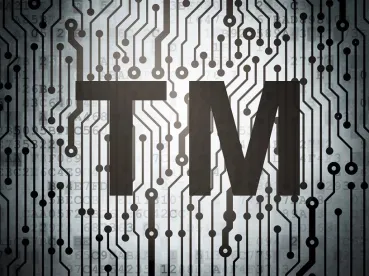The US Court of Appeals for the Federal Circuit underscored the importance of being mindful of the prohibition against assigning intent-to-use applications and of carefully constructing agreements for future assignment of such applications.
The federal trademark statute, the Lanham Act, prohibits assignment of intent-to-use applications before the filing of a statement of use, except to an applicant’s successor-in-interest for the business with which the application is associated.[1] Violating this provision leads not only to the invalidation of the assignment but also to invalidation of the application or registration, potentially years after the registration issues. In cases where a trademark owner relies on the filing date of that application or registration to establish its priority, such a result can be devastating to its ability to enforce rights in the trademark and, in some circumstances, even to be able to use the trademark.
To get around this prohibition, companies that are not successors-in-interest to the applicant’s business may enter into agreements to assign an intent-to-use application after statements of use are filed and/or registrations issue. Examples of such situations include
-
joint ventures where the application is filed by one of the partners before the joint-venture entity is formed,
-
new companies for which an individual founder files an application before incorporation, or
-
circumstances where parties agree to transfer a mark to resolve a dispute.
In a rare decision regarding this provision of the Lanham Act (Emerald Cities Collaborative v. Roese (Emerald Cities)), the US Court of Appeals for the Federal Circuit recently set important boundaries for these types of future assignment agreements.[2]
The applicant in Emerald Cities, Perry Orlando (Orlando), filed an intent-to-use application for the mark THE EMERALD CITY. Orlando then entered into an agreement with Emerald Cities Collaborative, Inc. (ECC) to assign the mark after it registered. After the registration, ECC opposed an application for the EMERALD CITY mark that an individual named Sheri Jean Roese filed. Roese asserted affirmative defenses and a counterclaim alleging that ECC’s registration was invalid because the agreement between Orlando and ECC was an impermissible assignment of an intent-to-use application.
The Federal Circuit focused on three provisions in its holding that the agreement between Orlando and ECC was an improper assignment instead of an agreement to assign. First, the agreement granted to ECC an irrevocable power of attorney to prosecute the application of the mark (and the agreement required Orlando to assist ECC in doing so). Second, the agreement allowed ECC, rather than Orlando, to exercise quality-control standards over Orlando’s use of the trademark and provided that Orlando would cease use of THE EMERALD CITY mark promptly in the event that ECC terminated it. Finally, Orlando agreed not to challenge ECC’s use of the mark or support challenges by third parties, whether before or after the registration date.
The Federal Circuit reasoned that although the form of the assignment technically required a delayed transfer of the mark after it matured to registration, the agreement’s substance constituted an immediate assignment of an intent-to-use application. Accordingly, the Federal Circuit upheld the Trademark Trial and Appeal Board’s decision that the assignment was improper and consequently canceled the registration.
Entering into an agreement that purports to have an applicant agree to assign an intent-to-use application in the future, but in effect transfers control of a trademark to the future assignee, could have serious consequences for the enforceability and validity of trademark rights, even years after the application has matured to registration. Rights holders should partner with corporate and intellectual property counsel to ensure that agreements related to intent-to-use application are properly structured to avoid such a result.
[1] 15 U.S.C. § 1060(a).
[2] Emerald Cities Collaborative v. Roese, No. 16-ag-1703, 2016 WL 7210145 (Fed. Cir. Dec. 13, 2016).




 />i
/>i
